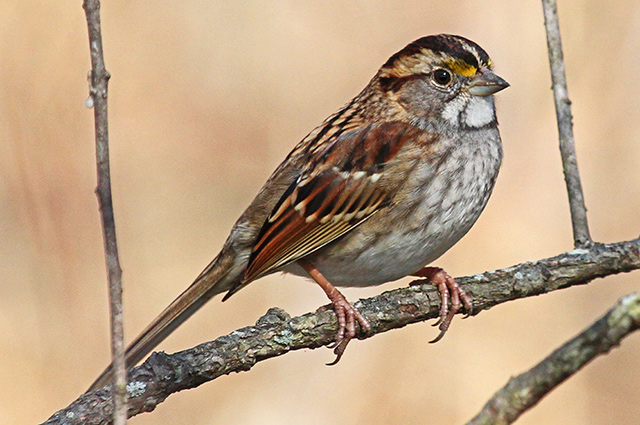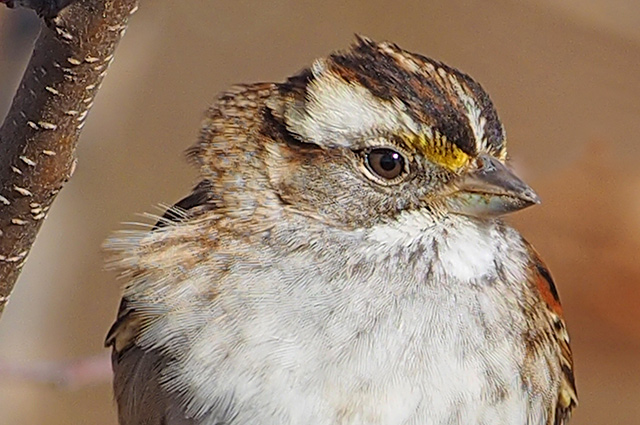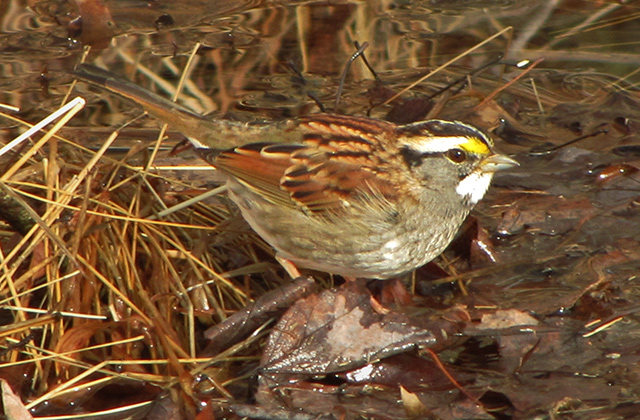
| Photos © Judy Gallagher |
 hspace="0" vspa
hspace="0" vspa alt=""/>
alt=""/> White-throated Sparrow Who is Old Sam Peabody, and why should he matter so much to birds? If a White-Throated Sparrow could talk, he might tell you. Then again, he might be too busy singing the praises of his breeding country. The notes of his song sound like Old-Sam-Peabody-Peabody or Oh-Sweet-Canada-Canada, depending on whom you ask. During their breeding season, in summer, White-Throated Sparrows like to inhabit forests located in, you guessed it, Canada. Areas of regrowth following logging or a fire are preferred. In the winter, the birds live in thickets, fields, suburbs, and backyards of Canada and the Northeastern United States. A good way to invite a visit is simply to fill a bird feeder with millet or black oil sunflower seeds. A brush pile will make your yard even more attractive as it gives the birds a place to take cover between feedings. This is a colorful sparrow. His black and white striped crown gives him an appealing “skunk cap” look. The region between his eyes and beak is yellow. Tan-crowned White-Throated Sparrows also exist; these birds nearly always mate with a member of the white-crowned group. White-Throated Sparrows are abundant and according to the 2016 State of the Birds report are of lowest conservation concern. Like other birds, they eat seeds, fruit, insects, and snails, but they also like the buds, blossoms, and young seeds of trees, such as oak, elm, and maple. |





